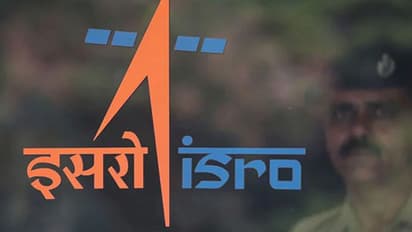ISRO set to make history with maiden SSLV-D1/EOS-2 mission

Synopsis
Scientists at the ISRO have been engaged in developing small launch vehicles over the last few weeks to meet the demand for such small satellites, which weigh upto 500 kgs and can be injected into the 500 kms low earth orbit.
The Indian Space Research Organisation (ISRO) is on the cusp of making history as the space agency is all set to embark on its maiden SSLV mission, ferrying an earth observation satellite and a student satellite from the spaceport in Sriharikota. After successfully launching missions with its dependable workhorses, the Polar Satellite Launch Vehicles (PSLV) and Geosynchronous Launch Vehicle (GSLV), ISRO will launch its first Small Satellite Launch Vehicle (SSLV), which will be utilised to place satellites in low Earth orbit.
To fulfil the demand for such small satellites, which weigh up to 500 kg and can be put into the 500 km low earth orbit, scientists at the ISRO have been working on building small launch vehicles over the previous several weeks. The SSLV has a vehicle diameter of two metres as opposed to the PSLV's 2.8 metres, and is 34 metres tall, or around 10 metres shorter.
While PSLV has a lift off mass of 320 tonnes and can carry payloads up to 1,800 kg, SSLV has a lift off mass of 120 tonnes.
Also Read | Earth is rotating faster, completes rotation in less than 24 hours; sets record for shortest day
Earth Observation Satellite -02 and AzaadiSAT, a companion satellite created by the student team of "Space Kidz India," would be carried by SSLV on the mission this coming Sunday. According to ISRO sources, the countdown compared to other missions which would be 25 hour is reduced to five hours and was expected to commence on Sunday at 4.18 hours for the lift off scheduled at 9.18 am from the first launch pad at Satish Dhawan Space Centre, Sriharikota.
The fourth stage of SSLV is important because it contains the Velocity Trimming Module, which uses liquid propulsion to move the satellites into the desired orbit. The first three stages of the rocket are powered by solid fuel.
Advanced optical remote sensing with great spatial resolution is available from the ISRO-designed Earth observation satellite. It is a member of the microsatellite family of satellites.
After travelling for around 13 minutes, SSLV is anticipated to launch the AzaadiSAT, an eight kilogramme Cubesat created by female students from government schools across the nation to commemorate the 75th anniversary of independence, after the EOS-02.
Also Read | Chinese Space rocket debris crashes back to earth over Indian Ocean; video goes viral
The AzaadiSAT carries 75 different payloads each weighing around 50 gms. Girl students from rural regions across the country were provided guidance by ISRO scientists to build these payloads which are integrated by the student team of ‘Space Kidz India’.
The data from this satellite would be used by the ground system created by Space Kidz India. In 1965, ISRO started launching sounding rockets to do studies on space and the upper atmosphere. In November 1963, a sounding rocket was the first to be fired close to Thiruvananthapuram.
(With PTI inputs)